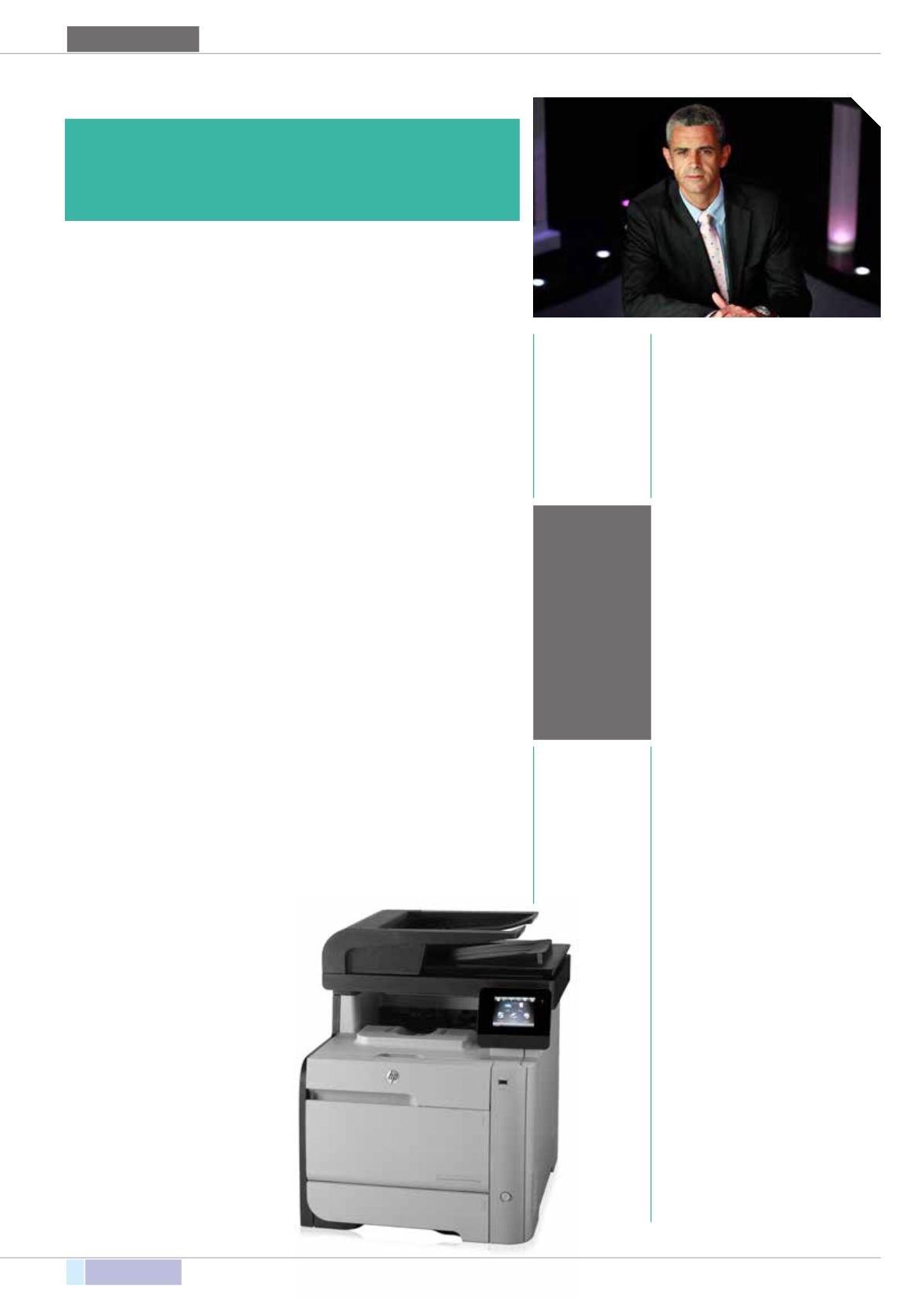
01732 759725
interview
Print.IT Reseller
26
HP CEO Meg Whitman likes to talk
about the ‘new style of IT’ being
driven by mobility, the cloud, big
data and security. These four pillars
are the building blocks of HP
innovation and product development
in all its divisions, including print.
The impact these trends are having
are clearly evident in recent HP printer
innovations, from the introduction of
scanner-optimised Flow MFPs and the
industry’s first MOPRIA-certified printers to
the launch of the Instant Ink subscription
model.
Against a backdrop of declining print
volumes in developed economies, these
developments are helping to maintain the
relevance and value of print at a time when
content is increasingly created, shared and
stored electronically.
Gary Tierney, head of HP’s printing
division in the UK & Ireland, cites mobile
printing as an example of how HP has
been able to increase print volumes by
meeting the needs of customers.
“There was a time when photos were
printed all the time. Then, with the advent
of the smartphone, Snapchat, Instagram
and Facebook, photos were shared
in digital form. Now, we are seeing a
resurgence in printing as people are able
to print information from their phones and
tablets simply and easily. We have made
the process intuitive, simple, driverless,”
he said.
“When we look at devices that are
connected to the web, the feedback we
get shows an ‘on top’ print volume where
users have Android/iOS versus a device
where nobody is using a mobile. In general,
people print in the home at a certain level,
but when mobile printing is brought in and
made simple, we see an exponential ‘on
top’ growth, which is really positive. People
want to print things off these devices.”
Through initiatives like HP ePrint and
WiFi Direct printing, HP was one of the
pioneers of mobile printing. More recently,
it has become a driving force behind
MOPRIA, the Mobile Printing Industry
Alliance, which has developed mobile
printing standards that, when adopted
across the printer, mobile device and
Style icons
PrintIT Reseller
speaks to Gary Tierney, head of HP’s
printing division in the UK & Ireland, about how the
‘new style of IT’ is impacting office printing
and security. All four are inter-connected.
How do we see print linking into this
change? There was a time when print
meant print, copy, scan and fax. Now, fax is
pretty much dead; print stable; and copying
has been in secular decline for ever.
Scanning, though, is increasing. The future
is moving towards a scanning-centric piece,
which lends itself to big data, lends itself
to cloud, has a huge impact on the mobility
side and brings security to the fore. When
you digitise your data and your paper-
based documents and you share them, all
those things come to bear,” he said.
Tierney concedes that scanning could
drive down print volumes, but stresses the
importance of viewing the bigger picture,
which plays to HP’s strength in workgroup
printing.
“Scanning is something HP has
embraced for years, whether in a
standalone product or integrated in an
MFP environment. That functionality is
something we think will be a differentiator
for us. Does it have an impact on printing
volume? Yes, I think it does, by simplifying
workflow and processes for people.
Account opening or loan applications in a
bank are paper-intensive. The information
they need – a copy of a photograph,
passport, home bill etc. – is just the tip of
the iceberg. The level of information they
get you to fill out and then process and
how they move that paper through their
organisation is wholly inefficient. That is
something financial services is grappling
with: how do they streamline all those
processes? Does it mean less pages are
printed? Absolutely. No doubt. But we
think we can make it very simple on our
devices – and not just at our device: it’s
innovating around the device, through the
eco-system back into the central system.”
This, says Tierney, could involve a
retreat from centralised printing to
distributed printing close to users’
workstations.
“The typical environment in an office
today is very much about consolidation of
print and convergence of printers, copiers,
fax machines and scanners – going away
from personal printers on people’s desks
to more of a departmental solution with
software industries, will remove the need
for users to install manufacturer-specific
mobile print drivers.
Tierney likens HP’s work with MOPRIA
to its promotion of multifunctional printers,
arguing that the benefits of establishing
an industry standard outweigh any short-
term commercial advantages in being a
technology leader.
“We were the first to market with
all-in-ones. Then we licensed quite a bit of
that technology to other vendors so that
they could come to market with their own
all-in-ones. Why would we do that? Instead
of one person on their own trying to drive
a market, you need a number of different
competitors and options for customers
to choose from, which starts to raise the
whole market. The same goes for MOPRIA.
We could continue our own development
of ePrint, ePrint Enterprise, WiFi Direct, but
in everything else HP has been doing we
talk to industry standards. MOPRIA is a
move to get industry standards for mobile
printing,” he said.
Four pillars
Mobility is changing the way people
consume, create and store data, but, as
Tierney points out, that is just one of the
trends HP is addressing with its new print
products.
“The three other key pillars we see,
apart from mobile, are big data, the cloud
Gary Tierney, head
of HP’s printing
division in the UK &
Ireland
HP Colour
LaserJet Pro
MFP M476:
the industry’s
first MOPRIA-
certified printer
Continued...
We are seeing
a resurgence
in printing as
people are
able to print
information
from their
phones and
tablets simply
and easily.


